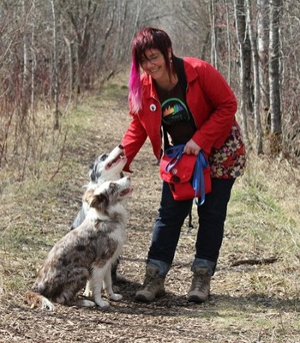CLASS talk with Dr. Roewan Crowe
Mon. Feb. 1, 2016
 This fall, University of Winnipeg’s Centre for the Liberal Arts and Secular Society (CLASS) offered a Fall Institute, “Animality, Humanity, Secularity.” The Institute was run as a three-credit hour course on ecology in a secular world, taught by Dr. Jason Hannan, Assistant Professor in the Department of Rhetoric, Writing, and Communications, and it featured a number of guest speakers including world renowned primatologist and animal rights activist, Dr. Jane Goodall.
This fall, University of Winnipeg’s Centre for the Liberal Arts and Secular Society (CLASS) offered a Fall Institute, “Animality, Humanity, Secularity.” The Institute was run as a three-credit hour course on ecology in a secular world, taught by Dr. Jason Hannan, Assistant Professor in the Department of Rhetoric, Writing, and Communications, and it featured a number of guest speakers including world renowned primatologist and animal rights activist, Dr. Jane Goodall.
On October 29, 2015, Dr. Hannan introduced Dr. Roewan Crowe, Associate Professor of Women’s and Gender Studies and Director of the Institute for Women’s and Gender Studies, as the guest lecturer for the class.
For more about Dr. Crowe and her work, check out her website.
“These Queer Relations: Thinking/Feeling Through Familiar Relationships with Animals”
Dr. Crowe began the class by introducing herself and her talk and she spoke about the title for her talk, suggesting that in her process of preparing for the talk, she had realized that the title is likely broader than she can address in the one class. She spoke about the dogs that are important in her life, Blue and Mieke pictured with her above, before turning to the reading for that class, “The Companion Species Manifesto: Dogs, People, and Significant Otherness” by Dr. Donna Haraway (Chicago, Prickly Paradigm Press, 2003). Haraway is Distinguished Professor Emerita of the Departments of History of Consciousness and Feminist Studies at the University of California Santa Cruz.
Companion species for Haraway, Dr. Crowe explains to us, are radically different species who share history, proximity, and purpose. And, while there are many different companion species, it is dogs and her relationship with dogs, and the mutual responsibility and respect that lies at core of these relationships that is of interest to Haraway.
Crowe states that in “The Companion Species Manifesto,” as in her earlier work, such as her first manifesto which was published in 1985, “A Cyborg Manifesto: Science, technology, and socialist-feminism in the late twentieth century” (Retrieved February 1, 2016), Haraway seeks to reject the rigid boundaries that separate us from one another and to dismantle the hierarchies of class, race, ethnicity, sexuality, and location.
Haraway considers the human-dog relations in historical and evolutionary terms and discusses in detail the relational aspect of these in philosophical terms all through the lens of feminist and socialist theory. One criticism of Haraway’s "Companion Species" is that it is centred around a hierarchical relationship, dog-owner and dog, but as Dr. Crowe points out, that even here, Haraway tries to “disrupt that sense of hierarchy.”
In addition to the reading, the class also discussed a a video on youtube of Carolyn Scott and her Golden, Rookie, dancing to "You're the One that I Want" from the movie, Grease. (See link to the video at the bottom of the page.) After a thoughtful discussion, Dr. Crowe concluded by bringing the class full circle, inviting each of us to engage in a free writing exercise about a specific experience each of us has had with a particular dog.
In reading “The Companion Species Manifesto” after class, I could see how Haraway focused on the reciprocal nature of even something seemingly hierarchical as dog-training, speaking as she does of “dogs and humans construct[ing] ‘rights’ in each other” (p. 53). To Haraway, “something important comes into the world in the relational practice of training; all the participants are remodeled by it” (p. 54).
While her writing is clearly serious, I thought her tone is sometimes tongue-in-cheek, as when she suggests that “I want my readers to know why I consider dog writing to be a branch of feminist theory, or the other way around (p. 3).” Haraway also periodically speaks from her own experience with her dogs, Cayenne and Roland, in both the text itself and in asides through-out under the heading “Notes of a Sports Writer’s Daughter.” I thought the use of humor in these passages helped balance the more weighty text, leaving me open to receive and appreciate passages such as the following:
The goal is the oxymoron of disciplined spontaneity. Both dog and handler have to be able to take the initiative and to respond obediently to the other. The task is to become coherent enough in an incoherent world to engage in a joint dance of being that breeds respect and response in the flesh, in the run, on the course. And then to remember how to live like that at every scale, with all the partners (p. 63).
Lisa McLean
Faculty of Arts
204-786-9490
